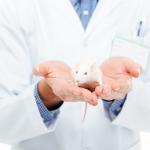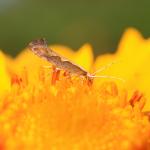Cancer cells are smart. Very smart.
Biomedicine & Biotech
In parts of Africa, it is common for older boys to undergo ritual circumcision as a passage into manhood. Unfortunately, the practice occasionally costs them their manhood.
Over 1.5 million people have been infected with the Zika virus in the past two years and more than 2,200 babies born with Zika-related microcephaly.
The next time you reach for your handy kitchen sponge to mop up a spill on the countertop, remember the message in a recent article in Science Reports entitled "Microbiome analysis and
One of the troubles with agriculture is the need for farmers to apply fertilizer. The plants don't soak up all of it, which inevitably results in fertilizer running off into lakes and rivers.
Menopause often has some pretty negative effects on women. Their risks of heart disease, osteoporosis and obesity all increase, to say nothing of the hot flashes that can make life a misery.
There may be a way to lose weight while eating a high-fat diet and you wouldn't even have to sell your soul to the devil. But, you would have to stop smelling for a while.
Let me explain.
Environmental contamination with heavy metals is often the result of various types of industrial processes. Because heavy metals can be dangerous to humans and other wildlife, contaminated sites need to be cleaned up. This isn't easy.
The race is on as to where the first genetically modified (GM) organisms will be released into the environment in the United States.
There are many questionable aging-related products on the market. One of the more recent is TeloYears, a test that supposedly determines your "true age" by measuring the length of a structure on your chromosomes called telomeres.












